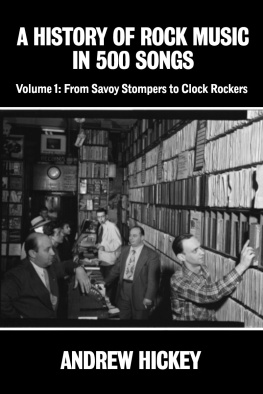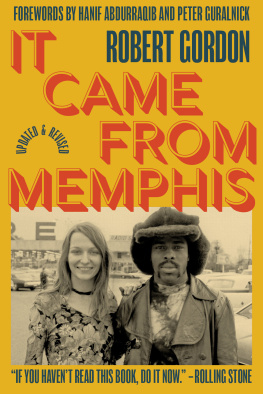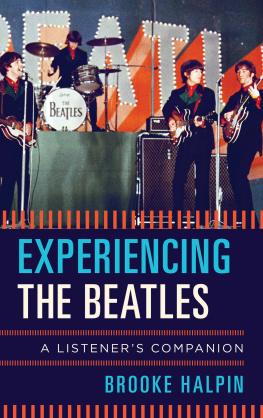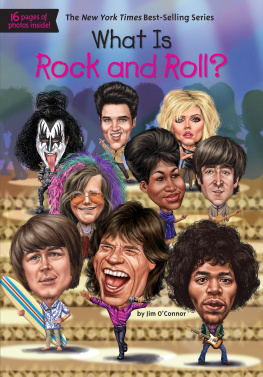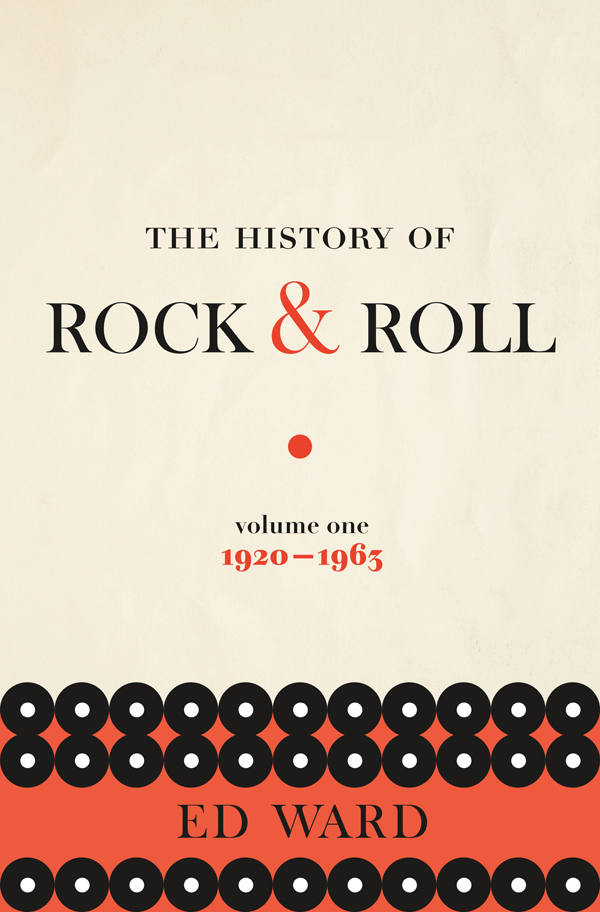Contents
Guide

The author and publisher have provided this e-book to you for your personal use only. You may not make this e-book publicly available in any way. Copyright infringement is against the law. If you believe the copy of this e-book you are reading infringes on the authors copyright, please notify the publisher at: us.macmillanusa.com/piracy.
To the Obamas, a First Family so rock & roll they named their dog after Bo Diddley.
This book is written to be read from the first page to the last, telling a story in sequential form, just like any other narrative history. Its possible to do this at much greater length and much greater detailwitness Taylor Branchs magisterial three-part history of Americas struggle for civil rights led by Martin Luther King Jr. or Claude Mancerons almost novelistic five-parter on the French Revolutionbut I wanted to make this story thorough yet accessible to the kind of people who dont enjoy gigantic reads as much as I do. I also wanted to try to impart the excitement I experienced once I grabbed a ride on what turned out to be a lot more than popular music, a corner that was turned after this books narrative ends, but one we can see approaching in its last pages.
I deliberately steered away from the Great Performer approach to this story, because although you cant ignore the Elvis Presleys and Ray Charleses here, the less well-known figures gave context to what they achieved and played their parts in shaping the eras in which they were activeoften, in this part of the story, only in one part of the country and to a non-mainstream audience. They were, many of them, rediscovered after their years in the spotlight and influenced a lot of music several decades later, which also gave many of them second careers. Also, the people who took it upon themselves to supply the music these people made to the marketplace of jukebox operators, radio stations, and record storesrecord biz people like Sam Phillips, Syd Nathan, Art Rupe, Mimi Trepel, Vivian Carter, Berry Gordy, Phil Spector, and Florence Greenbergneed their roles documented, and Ive threaded them in among the performers, as well as songwriters and instrumentalists in this era before the writer/performer became the default model.
To this end, Ive tried to make the experience of reading this book as smooth as possible, but there are a couple of places where the reader is presented with some long lists of names or songs and/or performersas, for instance, the fat list of records released in 1957 that are considered essential classics today but never even hit the regional, let alone national charts (see page 154). These should be welcomed as opportunities to explore: if you already know the material, youll get the point, but if you dont, the ease of finding this music presented by online sources these days sets you up for hours of exploration and, I hope, enjoyment. Some of the sounds take a bit of getting used to, but I envy the person hearing this music for the first time, as Im sure a lot of you would be doing. Make playlists, check out videos, oras old-fashioned as it may seemgo deeper by buying actual CDs, which often have liner notes illuminating the music far deeper than I can and, at their best, can provide an in-depth look at a performer or genre.
And you may notice that with a cast of characters as large as this, many of them drop out of sight after their first appearance or after their careers take off. If reading what I have to say about them here and your subsequent enjoyment of their music whets your interest, by all means pick up books dedicated entirely to them. Such authors as Peter Guralnick (his two-volume biography of Elvis and books dedicated to Sam Cooke and Sam Phillips are unparalleled), Robert Gordon (on Muddy Waters and Stax Records), R. J. Smith (Central Avenue and James Brown), and many others listed in the bibliography are the places to start. Only Pete Frames astonishing Restless Generation, about British rock & roll up to 1960, wasnt published in the United States, but again, its well worth finding.
From the records and books, you can progress to the films, of which there are an increasing number, many of them well-researched documentaries. But dont stop at the documentaries; some of the contemporary films are worth watching, too. Id list The Girl Cant Help It, Jailhouse Rock, Rebel Without a Cause, and Blackboard Jungle as essential, and even the various films that exist mostly to highlight live performances and exploit what was perceived as a short-lived fad have fine performances wedged in with the less memorable ones. Later fiction films like Ray (about Ray Charles), La Bamba (Ritchie Valens), and American Hot Wax (Alan Freed) are very true to their subjects, while others push agendas ( The Buddy Holly Story famously omits Norman Petty entirely and callously misrepresents the Holley family) or, like Cadillac Records, ostensibly about Chess Records, warp history to make it more like what Hollywood thinks it should be. Armed with the facts, though, there are moments in all of them that are both relatively accurate and highly entertaining.
In the end, though, this book is about the music and how it came to be made, and at the risk of repeating myself, I want you to use it as a springboard to new discoveries, new genres, and new performers. Pretty soon, youll be wondering why I havent mentioned H-Bomb Ferguson, or Ronnie Dawkins, or the Slades. Thats when youll know Ive done my job here: rock & roll is a big world and contains many fascinating histories. Welcome to it. Tell us what you find.
Ed Ward
Austin, Texas
November 2016
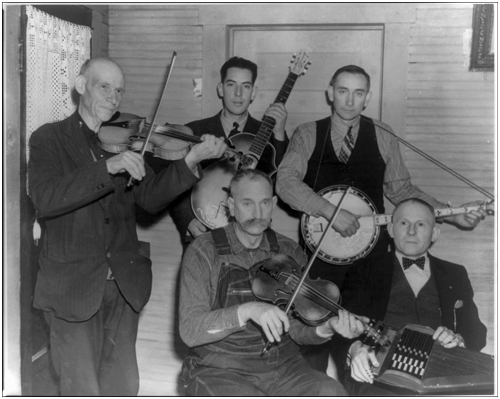
The Bogtrotters, with Uncle Eck Dunford (far left) .
(Library of Congress, Prints & Photographs Division, Lomax Collection, LC-DIG-ppmsc-00401)
In mid-nineteenth-century rural Southern America, which is as good a place as any to start this story, music wasnt something you did. Or, rather, it could have been just one of the things you did, if you did it, like smoking hams, mending the roof and the fences, and hoeing the vegetable patch. Black or white, Northern or Southern, rural life consisted of one job after another, just to stay alive. Sometimes, particularly among African Americans, music accompanied work, as it also did among sailors or excavating crews. Field hollers may have been African survivals, and recordings of prisoners in the fields doing agricultural work, giving off with whoops and pieces of melody, sound eerie to our ears. Along with chain gang songs and songs laborers sang while laying or mending railroad tracks, this music gave solidarity to groups of people engaged in common work. White rural people, who often lived close to blacks, especially in farming communities, had their own uses for music: women in particular memorized long ancient stories in the forms of ballads handed down through the generations and often sang them doing womens work like spinning, weaving, or sewing, or else used them as lullabies. Both groups sang communally in church, and both used instruments for socializing and to play music for dancing: fiddle, which the whites had brought with them (along with a lot of its repertoire) from the old country and which blacks had picked up during slavery from the masters; banjo, which was based on a West African instrument called the banjar (among many other names) and, being easily made from things one had around (wood, hide, gut strings), caught on right away; and guitar, which, being store-bought, was precious and at least at first not in common use.


